Filters
Contacts
(Less)
-
U.S. Geological Survey
-
USDA-FSA-APFO Aerial Photography Field Office
-
U.S. Geological Survey, National Geospatial Technical Operations Center
-
Aerial Photography Field Office (APFO)
-
Energy and Minerals
-
Central Energy Resources Science Center
-
U.S. Geological Survey - CERSC Data Management Services Project
-
U.S. Geological Survey - ScienceBase
-
U.S. Geological Survey
-
Matthew Granitto
-
Wesley A Bickford
-
U.S. Geological Survey, Central Energy Resources Team
-
National Minerals Information Center
-
Jaime S Azain
-
Jessica A Hopple
-
Nedal T Nassar
-
Aaron E Devries
-
A. Rae Ann Orkild-Norton
-
Leslie F Ruppert
-
Christopher J Schenk
-
Arizona Geological Survey
-
Steinshouer, Douglas W.
-
U.S. Geological Survey - ScienceBase
-
Walden, Susan M
-
Susan M Weiler
-
Northeast Region
-
Great Lakes Science Center
-
Geology, Energy & Minerals Science Center
-
Geology, Geophysics, and Geochemistry Science Center
-
Poul Emsbo
-
Albert H Hofstra
-
Alan E Koenig
-
Kurt P Kowalski
-
Nick A Karl
-
Mitchell M Bennett
-
Eric A Morrissey
-
Cevat O Karacan
-
Mary R Croke
-
Barbara K Reck
-
Ecosystems
-
GS ScienceBase
-
Iorgulescu, R.I.
-
Michael S Baker
-
Pawlewicz, Mark J
-
Pawlewicz, Mark J.
-
Polimeni, J.M.
-
Rupert J Myers
-
Shifeng Dai
-
Steinshouer, Douglas W
-
Thomas E Graedel
-
More...
|

The data document the results of several microbe bioassays performed by the USGS on Phragmites australis plants, including those performed on mature leaves, seedlings, and dead leaf tissues exploration of the literature to find accounts of microbes associated with Phragmites worldwide. For the bioassays, we prepared 162 pure cultures isolated from Phragmites plants in North America along the east coast, Florida, the Gulf of Mexico, and the Great Lakes area, 125 of which were from a previous study, and 38 represent new collections. The DNA sequences used to identify the 37 new collections are included. Microbes were isolated from plants collected from 2015-2018. We performed assays using both North American plant...
Categories: Data;
Tags: Africa,
Asia,
China,
DNA sequencing,
Ecology, All tags...
Europe,
Florida,
France,
Genetics,
Germany,
Hong Kong,
Indiana,
Italy,
Japan,
Louisiana,
Maine,
Maryland,
Michigan,
New Jersey,
North America,
North Carolina,
Ohio,
Philippines,
Poland,
Portugal,
Rhode Island,
Russia,
Spain,
USGS Science Data Catalog (SDC),
United Kingdom,
Virginia,
bacteria,
biota,
flowering plants,
fungi,
pathology,
plant and animal testing,
systematics and taxonomy, Fewer tags

The Critical Minerals in Archived Mine Samples Database (CMDB) contains chemistry and geologic information for historic ore and ore-related rock samples from mineral deposits in the United States. In addition, the database contains samples from archetypal deposits from 27 other countries in North America, South America, Asia, Africa and Europe. Samples were obtained from archived ore collections under the U.S. Geological Survey's project titled "Quick Assessment of Rare and Critical Metals in Ore Deposits: A National Assessment" (2008 to 2013) in an effort to begin an assessment of the Nations' previously mined ore deposits for critical minerals. Mineralized and altered rock samples were provided by the Colorado...
Categories: Data;
Types: ArcGIS REST Map Service,
ArcGIS Service Definition,
Downloadable,
Map Service,
OGC WFS Layer,
OGC WMS Layer,
Shapefile;
Tags: Alaska,
Argentina,
Arizona,
Arkansas,
Australia, All tags...
Brazil,
Burma,
California,
Canada,
Chile,
China,
Colorado,
Cuba,
Democratic Republic of Congo,
Economic Geology,
Finland,
Geochemistry,
Germany,
Honduras,
Idaho,
India,
Indonesia,
Japan,
Kansas,
Kentucky,
Maine,
Mauritania,
Mexico,
Michigan,
Mineral Resources,
Minnesota,
Missouri,
Montana,
NGDB,
Namibia,
National Geochemical Database,
Nevada,
New Jersey,
New Mexico,
New York,
North Carolina,
Norway,
Oklahoma,
Oregon,
Papua New Guinea,
Pennsylvania,
Peru,
Philippines,
Poland,
Portugal,
Russia,
South Africa,
South Carolina,
South Dakota,
Sweden,
Tennessee,
Texas,
USGS Science Data Catalog (SDC),
United States,
Utah,
Vietnam,
Virginia,
Washington,
Wisconsin,
Wyoming,
Zambia,
aluminum,
antimony,
arsenic,
atomic emission spectroscopy,
barium,
beryllium,
bismuth,
boron,
cadmium,
calcium,
cerium,
chemical analysis,
chromium,
cobalt,
copper,
critical minerals,
dysprosium,
economic geology,
erbium,
europium,
fluorine,
gadolinium,
gallium,
geochemical data,
geochemistry,
geoscientific information,
germanium,
gold,
hafnium,
historic ores,
holmium,
indium,
iron,
lanthanum,
lead,
lithium,
lutetium,
magnesium,
manganese,
metallic mineral resources,
mineral deposit type,
mineral deposits,
mineralogy,
molybdenum,
neodymium,
nickel,
niobium,
nonmetallic mineral resources,
palladium,
phosphorus,
platinum,
potassium,
praseodymium,
rhenium,
rock geochemistry,
rocks and deposits,
samarium,
scandium,
silicon,
silver,
strontium,
sulfur,
tantalum,
tellurium,
terbium,
thallium,
thorium,
thulium,
tin,
titanium,
tungsten,
uranium,
vanadium,
ytterbium,
yttrium,
zinc,
zirconium, Fewer tags

This coverage includes arcs, polygons and polygon labels that describe U.S. Geological Survey defined geologic provinces of Europe including Turkey. (Albania, Andorra, Austria, Belgium, Bosnia and Herzegovina, Bulgaria, Croatia, Cyprus, Czech Republic, Denmark, Finland, France, Germany, Greece, Hungary, Iceland, Ireland, Italy, Liechtenstein, Luxembourg, The Former Yugoslav Republic of Macedonia, Malta, Monaco, Netherlands, Norway, Poland, Portugal, Romania, San Marino, Serbia and Montenegro, Slovakia, Slovenia, Spain, Sweden, Switzerland, Turkey, United Kingdom and Vatican City.) Each province has a set of geologic characteristics distinguishing it from surrounding provinces. These characteristics may include the...
Categories: Data,
pre-SM502.8;
Types: Downloadable,
Map Service,
OGC WFS Layer,
OGC WMS Layer,
Shapefile;
Tags: AL,
AN,
AU,
Adana/Sivas, Province 2079,
Adriatic Basin, Province 4058, All tags...
Aegean, Province 4075,
Albania,
Alentejo-Guadalquivir Basin, Province 4077,
Alps, Province 4051,
Andalucia, Province 4088,
Andorra,
Anglo-Dutch Basin, Province 4036,
Anglo-Paris Basin, Province 4040,
Apulia Platform, Province 4059,
Aquitaine Basin, Province 4045,
Araks, Province 2080,
Armoricia, Province 4041,
Austria,
BE,
BK,
BU,
Baltic Depression, Province 4021,
Baltic Shield-Norwegian Caledonides, Province 4016,
Barents Continental Slope, Province 4013,
Belgium,
Belorussian-Voronezh High, Province 1004,
Betic Zone, Province 4078,
Black Sea Continental Slope, Province 1107,
Bohemia, Province 4046,
Bosnia and Herzegovina,
Bresse Depression, Province 4054,
Bulgaria,
CY,
Carpathian-Balkanian Basin, Province 4061,
Corsican-Sardinian Basins, Province 4067,
Crete, Province 4076,
Croatia,
Cyprus,
Czech Republic,
DA,
Denmark,
Dinaric Alps, Province 4071,
Dobrogea Foreland, Province 1103,
Dobrogean Orogen, Province 4063,
EI,
EZ,
Earth Science,
Economic geology,
Euphrates/Mardin, Province 2075,
Europe,
FI,
FO,
FR,
Faeroes-Shetland-Orkney Basin, Province 4019,
Faroe Islands,
Fennoscandian Border-Danish-Polish Margin, Province 4022,
Finland,
France,
GI,
GK,
GM,
GR,
Galician Basin, Province 4073,
Gas,
Geologic province,
Geology,
German-Polish Basin, Province 4033,
Germany,
Gibraltar,
Greece,
Guernsey,
HR,
HU,
Haleb, Province 2076,
Hammerfest-Varanger Basin, Province 4015,
Hatton-Rockall Basin, Province 4020,
Horda-Norwegian-Danish Basin, Province 4023,
Hungary,
IC,
IM,
IT,
Iberian Massif, Province 4072,
Iberic Cordillera, Province 4083,
Iceland,
Ireland,
Ireland-Scotland Platform, Province 4026,
Irish Sea, Province 4030,
Isle of Man,
Italy,
JE,
Jersey,
Jura, Province 4052,
Kardiff/Menders Massif, Province 2084,
Kola Monocline-Finnmark Platform, Province 1051,
LO,
LS,
LU,
Lesser Caucasus, Province 2081,
Liechtenstein,
Lion-Camargue, Province 4056,
London-Brabant Platform, Province 4037,
Lusitanian Basin, Province 4074,
Luxembourg,
MK,
MN,
MW,
Malta,
Massif Central, Province 4043,
Mediterranean Basin, Province 2070,
Mid-North Sea High, Province 4028,
Midland Valley-Forth Approaches Basin, Province 4027,
Molasse Basin, Province 4049,
Monaco,
Munsterland Basin, Province 4038,
NL,
NO,
Natural Gas,
Natural Resources,
Natural gas resources,
Netherlands,
North Carpathian Basin, Province 4047,
North Sea Graben, Province 4025,
Northwest German Basin, Province 4035,
Norway,
Oil,
Oil,
Oil sand resources,
Oil shale resources,
PL,
PO,
Pannonian Basin, Province 4048,
Pelagian Basin, Province 2048,
Petroleum,
Po Basin, Province 4060,
Poland,
Portugal,
Provence Basin, Province 4068,
Pyrenean Foothills-Ebro Basin, Province 4044,
RO,
Resource Assessment,
Rhine Graben, Province 4055,
Rif Basin, Province 2072,
Romania,
Russian Craton Margin, Province 1011,
SI,
SM,
SP,
SR,
SV,
SW,
SZ,
San Marino,
Serbia and Montenegro,
Sicily, Province 4066,
Slovakia,
Slovenia,
Southwest German Basin, Province 4039,
Spain,
Spanish Trough-Cantabrian Zone, Province 4070,
Svalbard,
Sweden,
Switzerland,
TU,
Tajo-Duero Basin, Province 4082,
The Former Yugoslav Republic of Macedonia,
Thrace/Samsun, Province 2085,
Trans-Graben, Province 4053,
Transylvanian Basin, Province 4057,
Troms-Bjornoya, Province 4014,
Turkey,
Tuscany-Latium-Paola, Province 4062,
Tuz/Corum, Province 2083,
Tyrrhenian Basin, Province 4069,
U.S. Geological Survey,
UK,
USGS,
USGS Science Data Catalog (SDC),
Ukrainian Shield, Province 1013,
United Kingdom,
VT,
Vatican City,
Vestford-Helgeland, Province 4017,
West Black Sea Basin, Province 4064,
Zagros Fold Belt, Province 2030,
Zagros Thrust Zone, Province 2031,
environment,
europe,
geoscientificInformation,
oilgas,
wep,
worldgeologicmaps, Fewer tags

At recent technical conferences, many coal geoscientists in academia and government institutions as well as in industry organizations have expressed concern about the dwindling number of students and young staff members interested in careers in coal geoscience. To better understand what is driving these trends and to identify potential ways that the community can increase interest and participation in coal geoscience, two different surveys were sent to 94 coal geoscientists who were current or past members of The Society of Organic Petrology (TSOP) in February 2020. As the trends and perceptions in industry and government organizations may be different than in universities, one distinct survey was sent to members...
Categories: Data;
Tags: Africa,
Asia,
Australia,
Canada,
China, All tags...
Coal,
Coal geoscience,
Coal geoscientist,
Columbia,
Denmark,
Europe,
Future of coal geoscience,
Gender,
Germany,
Greece,
Indonesia,
Last hire,
Left field,
Nigeria,
Non-combustion uses of coal,
North America,
Poland,
Recruitment,
Retrained,
Russia,
South America,
Spain,
Staff,
Students,
USGS Science Data Catalog (SDC),
United Kingdom,
United States, Fewer tags
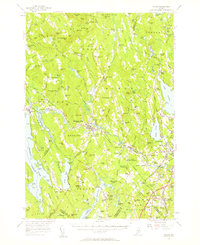
USGS Historical Quadrangle in GeoPDF.
Tags: 15 x 15 minute,
Downloadable Data,
GeoPDF,
GeoTIFF,
Historical Topographic Maps, All tags...
Historical Topographic Maps 15 x 15 Minute Map Series,
ME,
Map,
Poland,
imageryBaseMapsEarthCover, Fewer tags
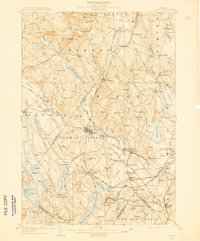
USGS Historical Quadrangle in GeoPDF.
Tags: 15 x 15 minute,
Downloadable Data,
GeoPDF,
GeoTIFF,
Historical Topographic Maps, All tags...
Historical Topographic Maps 15 x 15 Minute Map Series,
ME,
Map,
Poland,
imageryBaseMapsEarthCover, Fewer tags
This data set contains imagery from the National Agriculture Imagery Program (NAIP). The NAIP program is administered by USDA FSA and has been established to support two main FSA strategic goals centered on agricultural production. These are, increase stewardship of America's natural resources while enhancing the environment, and to ensure commodities are procured and distributed effectively and efficiently to increase food security. The NAIP program supports these goals by acquiring and providing ortho imagery that has been collected during the agricultural growing season in the U.S. The NAIP ortho imagery is tailored to meet FSA requirements and is a fundamental tool used to support FSA farm and conservation programs....
Types: Citation;
Tags: 3.75 x 3.75 minute,
4408734,
55061,
Aerial Compliance,
Compliance, All tags...
Digital Ortho rectified Image,
Downloadable Data,
JPEG2000,
KEWAUNEE CO WI FSA,
Kewaunee,
NAIP,
Ortho Rectification,
Orthoimagery,
POLAND,
POLAND, SE,
Quarter Quadrangle,
USDA National Agriculture Imagery Program (NAIP),
WI,
WI061,
farming, Fewer tags
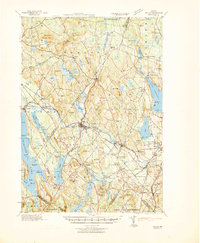
USGS Historical Quadrangle in GeoPDF.
Tags: 15 x 15 minute,
Advance,
Downloadable Data,
GeoPDF,
GeoTIFF, All tags...
Historical Topographic Maps,
Historical Topographic Maps 15 x 15 Minute Map Series,
ME,
Map,
Poland,
imageryBaseMapsEarthCover, Fewer tags
This data set contains imagery from the National Agriculture Imagery Program (NAIP). The NAIP program is administered by USDA FSA and has been established to support two main FSA strategic goals centered on agricultural production. These are, increase stewardship of America's natural resources while enhancing the environment, and to ensure commodities are procured and distributed effectively and efficiently to increase food security. The NAIP program supports these goals by acquiring and providing ortho imagery that has been collected during the agricultural growing season in the U.S. The NAIP ortho imagery is tailored to meet FSA requirements and is a fundamental tool used to support FSA farm and conservation programs....
Types: Citation;
Tags: 3.75 x 3.75 minute,
4408734,
55061,
Aerial Compliance,
Compliance, All tags...
Digital Ortho rectified Image,
Downloadable Data,
JPEG2000,
KEWAUNEE CO WI FSA,
Kewaunee,
NAIP,
Ortho Rectification,
Orthoimagery,
POLAND,
POLAND, NE,
Quarter Quadrangle,
USDA National Agriculture Imagery Program (NAIP),
WI,
WI061,
farming, Fewer tags
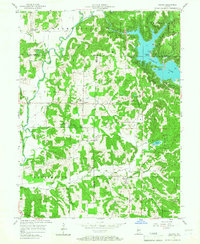
USGS Historical Quadrangle in GeoPDF.
Tags: 7.5 x 7.5 minute,
Downloadable Data,
GeoPDF,
GeoTIFF,
Historical Topographic Maps, All tags...
Historical Topographic Maps 7.5 x 7.5 Minute Map Series,
IN,
Map,
Poland,
imageryBaseMapsEarthCover, Fewer tags
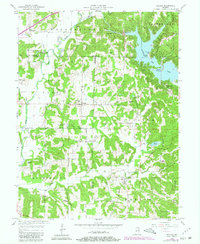
USGS Historical Quadrangle in GeoPDF.
Tags: 7.5 x 7.5 minute,
Downloadable Data,
GeoPDF,
GeoTIFF,
Historical Topographic Maps, All tags...
Historical Topographic Maps 7.5 x 7.5 Minute Map Series,
IN,
Map,
Poland,
imageryBaseMapsEarthCover, Fewer tags
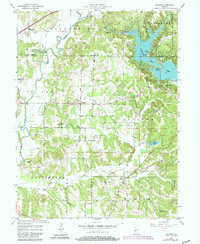
USGS Historical Quadrangle in GeoPDF.
Tags: 7.5 x 7.5 minute,
Downloadable Data,
GeoPDF,
GeoTIFF,
Historical Topographic Maps, All tags...
Historical Topographic Maps 7.5 x 7.5 Minute Map Series,
IN,
Map,
Poland,
imageryBaseMapsEarthCover, Fewer tags
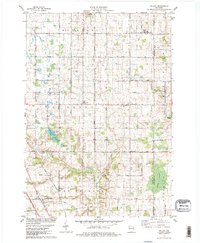
USGS Historical Quadrangle in GeoPDF.
Tags: 7.5 x 7.5 minute,
Downloadable Data,
GeoPDF,
GeoTIFF,
Historical Topographic Maps, All tags...
Historical Topographic Maps 7.5 x 7.5 Minute Map Series,
Map,
Poland,
WI,
imageryBaseMapsEarthCover, Fewer tags
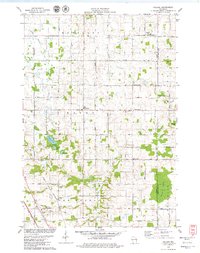
USGS Historical Quadrangle in GeoPDF.
Tags: 7.5 x 7.5 minute,
Downloadable Data,
GeoPDF,
GeoTIFF,
Historical Topographic Maps, All tags...
Historical Topographic Maps 7.5 x 7.5 Minute Map Series,
Map,
Poland,
WI,
imageryBaseMapsEarthCover, Fewer tags
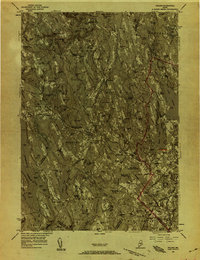
USGS Historical Quadrangle in GeoPDF.
Tags: 15 x 15 minute,
Advance,
Downloadable Data,
GeoPDF,
GeoTIFF, All tags...
Historical Topographic Maps,
Historical Topographic Maps 15 x 15 Minute Map Series,
ME,
Map,
Poland,
imageryBaseMapsEarthCover, Fewer tags
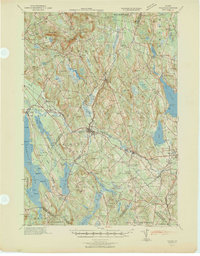
USGS Historical Quadrangle in GeoPDF.
Tags: 15 x 15 minute,
Advance,
Downloadable Data,
GeoPDF,
GeoTIFF, All tags...
Historical Topographic Maps,
Historical Topographic Maps 15 x 15 Minute Map Series,
ME,
Map,
Poland,
imageryBaseMapsEarthCover, Fewer tags
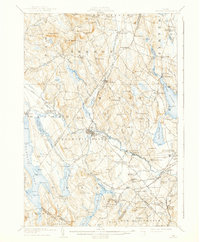
USGS Historical Quadrangle in GeoPDF.
Tags: 15 x 15 minute,
Downloadable Data,
GeoPDF,
GeoTIFF,
Historical Topographic Maps, All tags...
Historical Topographic Maps 15 x 15 Minute Map Series,
ME,
Map,
Poland,
imageryBaseMapsEarthCover, Fewer tags
Environmental monitoring has been an ongoing activity on the U.S. Department of Energy's Hanford Site in southeastern Washington for almost 50 years. Objectives are to detect and assess potential impacts of Site operations on air, surface and ground waters, foodstuffs, fish, wildlife, soil and vegetation. Data from monitoring effects are used to calculate the overall radiological dose to humans working onsite or residing in nearby communities. In 1989, measured Hanford Site perimeter concentrations of airborne radionuclides were below applicable guidelines. Concentrations of radionuclides and nonradiological water quality in the Columbia River were in compliance with applicable standards. Foodstuffs irrigated with...

USGS Historical Quadrangle in GeoPDF.
Tags: 15 x 15 minute,
Downloadable Data,
GeoPDF,
GeoTIFF,
Historical Topographic Maps, All tags...
Historical Topographic Maps 15 x 15 Minute Map Series,
ME,
Map,
Poland,
imageryBaseMapsEarthCover, Fewer tags
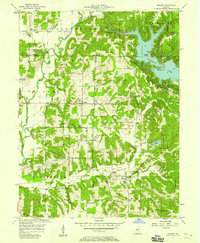
USGS Historical Quadrangle in GeoPDF.
Tags: 7.5 x 7.5 minute,
Downloadable Data,
GeoPDF,
GeoTIFF,
Historical Topographic Maps, All tags...
Historical Topographic Maps 7.5 x 7.5 Minute Map Series,
IN,
Map,
Poland,
imageryBaseMapsEarthCover, Fewer tags
|
|
